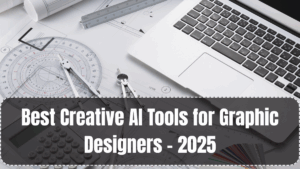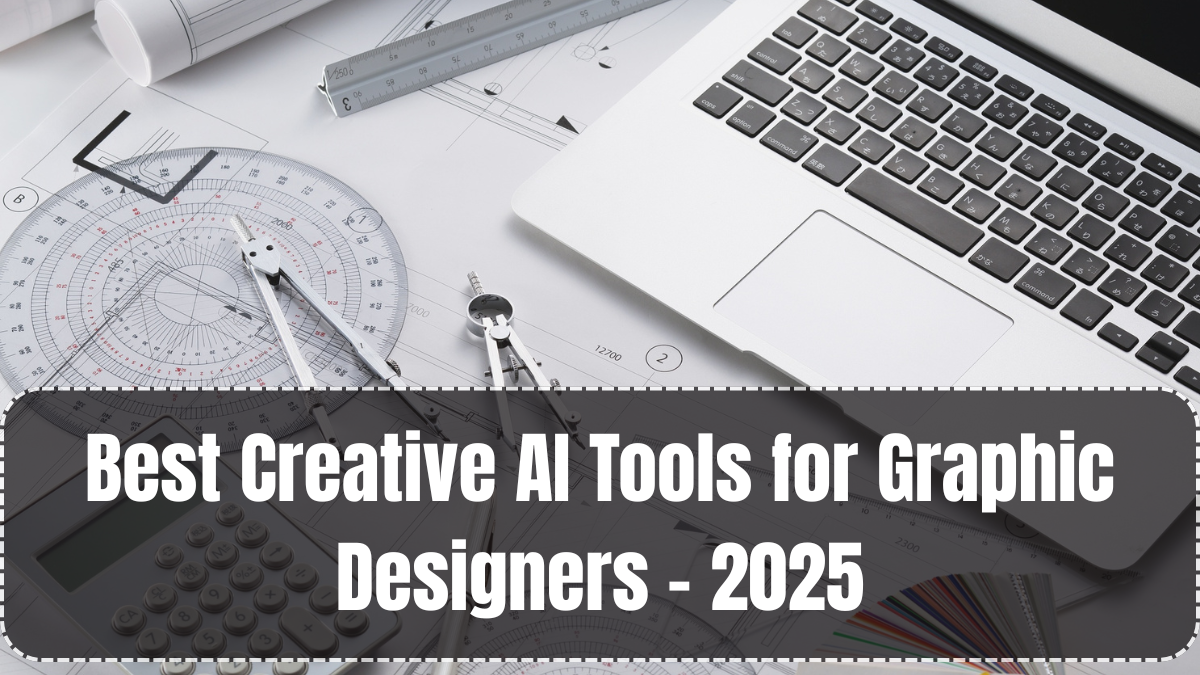In 2025, artificial intelligence is no longer just a buzzword — it’s a powerful creative partner for graphic designers across the UK and beyond. From automating tedious tasks to generating innovative concepts, Creative AI Tools 2025 are transforming the way visual content is designed, reviewed, and delivered. Whether you’re a freelance designer juggling multiple clients or a creative director leading a team, adopting the right AI tools can elevate your workflow and save you hours of time.
This guide explores the top AI tools every UK-based designer should be using in 2025 — for branding, UI/UX, illustration, video editing, and beyond.

Generative Design Platforms – From Prompt to Pixel
Generative AI tools are taking center stage this year, allowing designers to create original visuals simply by describing their vision in text. These platforms combine deep learning models with creative databases to deliver high-quality, custom-made designs in seconds.
Leading platforms in 2025:
-
Adobe Firefly – Fully integrated with Adobe CC, allowing real-time AI-based image generation and style transfers within Photoshop and Illustrator
-
Canva Magic Design – Ideal for quick social media graphics, offering AI-generated layouts, color palettes, and even caption suggestions
-
Kittl AI – Popular among logo and typography designers for its intuitive prompt-to-design generation
The rise of generative tools is redefining creativity, letting designers focus more on storytelling and strategy while AI handles production.
AI for Branding and Logo Design
Branding used to require weeks of client meetings, iterations, and revisions. But with Creative AI Tools 2025, designers now have access to automated branding suites that generate logo concepts, brand guidelines, and mockups in real time.
Top tools used by UK freelancers and agencies:
-
Looka – Creates full branding kits including logos, color schemes, and fonts
-
Hatchful by Shopify – Offers quick logo ideas with editable templates for startups
-
Tailor Brands AI – Uses machine learning to offer logos aligned with the client’s niche, values, and tone
These tools are not replacing designers — they’re enhancing decision-making and offering inspiration that shortens the concept-to-client cycle.
Smart UI/UX Design Assistants
User interface and experience design have become increasingly data-driven. AI tools in 2025 now analyze user behavior, generate layouts, and even perform real-time A/B testing simulations to predict what will work best.
Essential tools in this category:
-
Uizard – Converts hand-drawn wireframes into clickable prototypes using AI
-
Figma AI – Suggests layout improvements, aligns design with accessibility guidelines, and offers responsive design options based on screen sizes
-
TeleportHQ – Uses code generation and live previews to help designers collaborate with developers
With these smart tools, UI/UX designers in the UK are now working faster, testing more ideas, and building more user-friendly interfaces.
AI Video and Motion Graphics Tools
Video is a dominant content format in 2025, and designers are expected to deliver motion graphics just as easily as static visuals. AI tools now automate much of the editing, transitions, and effects work — making video creation accessible even to non-specialists.
Must-have tools:
-
Runway ML – Known for AI video editing, background removal, and motion tracking
-
Designs.ai Videomaker – Converts text-based scripts into full promo videos with music and voiceovers
-
Lumen5 – Ideal for creating social videos from blog content or client messages
These Creative AI Tools 2025 empower designers to diversify their services and meet growing video demands without needing to master complex editing software.
AI-Powered Image Editing and Enhancement
Basic photo editing has been completely transformed by AI in 2025. What used to take hours — background removals, skin retouching, object replacements — can now be done in seconds with advanced AI.
Popular AI image tools in the UK market:
-
Remove.bg – Instantly removes backgrounds from images
-
Luminar Neo – Enhances photos with AI-based lighting and composition fixes
-
Let’s Enhance – Upscales low-resolution images using machine learning
These tools allow graphic designers to focus more on creative refinement than repetitive tasks.
The Ethics and Limits of AI in Design
As AI becomes embedded in everyday workflows, designers are also navigating ethical considerations. In 2025, many UK agencies follow guidelines to:
-
Disclose when generative AI is used
-
Avoid using AI to copy or clone existing artists’ styles without consent
-
Review AI-generated content to ensure it aligns with the brand’s voice and message
While Creative AI Tools 2025 offer incredible speed and convenience, the human touch remains essential for emotional intelligence, cultural nuance, and originality.
Choosing the Right AI Tool: Factors to Consider
Before integrating an AI tool into your process, consider:
-
Compatibility with your current design stack (Figma, Adobe, etc.)
-
Learning curve – some tools are plug-and-play, others require more time
-
Cost – many tools have free tiers, but advanced features may require subscriptions
-
Data security – ensure tools meet GDPR compliance in the UK
Smart adoption means choosing tools that enhance your creativity, not restrict it.
FAQs
What are the best creative AI tools for graphic designers in 2025?
Top tools include Adobe Firefly, Canva Magic Design, Uizard, Figma AI, Runway ML, and Luminar Neo — each serving different creative needs.
Can AI tools fully replace graphic designers?
No. While AI boosts productivity, it cannot replace the creativity, strategy, and emotional intelligence of a human designer.
Are AI tools affordable for freelancers?
Yes. Many platforms like Canva, Uizard, and Looka offer free or affordable plans suitable for individual creators and small businesses.
Do UK design agencies use AI tools in 2025?
Absolutely. Most agencies have adopted AI to streamline workflows, automate repetitive tasks, and improve output speed.
Is using AI-generated design ethical?
It depends on usage. Ethical design includes transparency, respecting copyright, and using AI as a collaborative partner — not as a shortcut for plagiarism.
Click here to know more.
